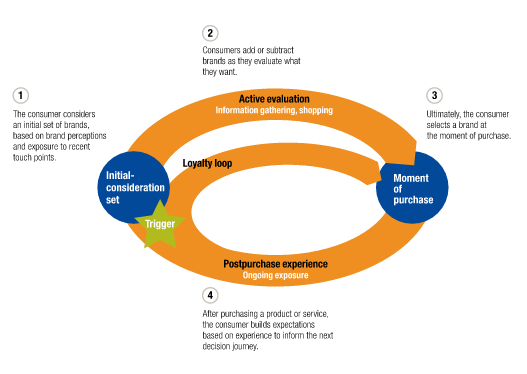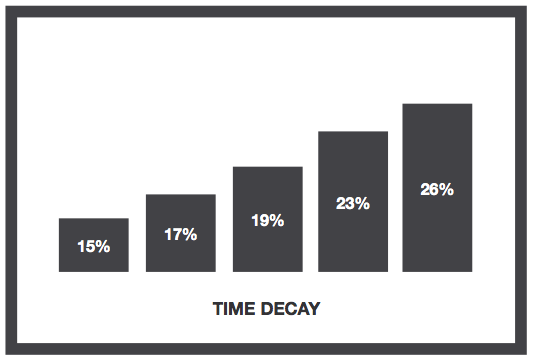“Half the money I spend on advertising is wasted; the trouble is I don’t know which half.”
During his lifetime, John Wanamaker was at the forefront of several advertising innovations, such as running the first full-page newspaper ad and hiring the first full-time copywriter, but it’s for this famous quote that he is perhaps best remembered in marketing circles.
Variations of this same statement have also been attributed to the likes of Henry Ford and J.C. Penny, which reinforces the timeless trope of executives worrying about finances.
In that sense not much has changed for modern marketers: CEOs and CFOs are still concerned about Marketing’s budget. They’re eager to see ROI numbers to justify the money their departments are investing in a variety of channels.
Luckily, we’re better equipped to measure the impact of our strategies and tactics than at any other time in history.
The question then becomes: are we attributing credit to the right strategies? How can we know with a decent level of certainty?
Accurately assigning credit for an online conversion is difficult. The series of behaviors B2B buyers perform before making a purchase can span multiple channels and look very idiosyncratic. Despite our best efforts, there’s very little marketers can do to force buyers to follow a set path to purchase.
The proverbial marketing funnel is an example of what marketers wished the buyer’s journey looked like. These charts work well for showing the potential deals Marketing and Sales are trying to bring through the pipeline, but they are ill-suited to visualize the complexity of the customer journey.
McKinsey & Company have created a more accurate representation of the customer journey, but it still can’t account for the varied channels and touchpoints that each respective customer will travel to.

That’s why attribution modeling has become vital to measuring the efficiency of each channel and strategy — it helps marketers understand which channels are the most effective at driving conversions.
In a nutshell, attribution modeling refers to the mathematical distribution of credit to marketing channels that influenced a visitor to take a desired action (usually referred to as conversion).
Attribution models are often represented in bar charts. Now, attribution models are by no means perfect, but they are far superior to any other measurement marketers have used in the past.
Avinash Kaushik, Digital Evangelist for Google, eloquently summarizes the benefits and limitations of attribution modeling:
“But most of what you’ll get out of these models is a deep, profound appreciation for how they, even in their most shining moments, give you directional guidance on how you adjust your media spend.”
Such indications are exactly what marketing and media directors need when analyzing which programs are performing and which are not. A study by Econsultancy and Google Analytics found that the most significant benefit of attribution modeling was indeed an improved ability to allocate spending across effective channels and increase ROI.

As Google and Econsultancy’s work shows us, attribution modeling can help you work toward a more informed, holistic understanding of how each of your channels contribute to online conversions.
But the particular model you use will, of course, have a huge impact on how attribution is distributed. It’s all too easy to end of up with inaccurate data that leads you in the wrong direction.
It’s this need for more accurate models that’s leading many marketers to move on from last click attribution, which has been the default model for some years.
As the name implies, last click attribution assigns nearly all of the credit to the last channel or touchpoint that a visitor engaged with before converting.

Last click made more sense in the early days of digital marketing when channels were limited, social media was just emerging, and Adwords was much more primitive.
Now, using last click essentially ignores all of the hard work you’ve put in to engage your customers on other channels that precede the final one, and it ignores the methods customers used to obtain information about your brand.
Last click can also result in heaping far too much praise on the last channel, making your analysis and your budget disproportionate. Using last click could make one channel look amazing when it’s really not.
A recent study by the CMO Club and Visual IQ found that 47.1% of CMOs are still using last touch attribution to assign credit for conversions. This is likely because it’s the default in Google Analytics.
So where should we now invest our attribution stock? There are several models to choose from that offer more detailed analysis than last click. The particular model that works best for B2B marketers is time-decay.

The time-decay model distributes credit for a conversion based on the recency of interaction with each channel. The touchpoints at the beginning get less credit with each touchpoint getting more credit in relation to its proximity to the actual conversion.
This model makes a great deal of sense for two reasons:
1. It takes into account that B2B marketers need to build momentum. Our audiences rarely make purchases on a whim, so multiple touchpoints are needed to get a conversion.
2. It gives channels other than the last one credit but still prioritizes the converting channel. After all, if the other touchpoints were so tremendous, why didn’t the buyer convert there?
__
Although time decay is a very accessible model, it doesn’t mean it’s the only option available. The most advanced attribution models use custom criteria to assign credit for conversions, but developing these models often requires the input of a data expert.
Regardless of whichever model you choose, remember to weigh the results carefully. Your marketing attribution has a tremendous impact on how you invest your department’s budget and prove ROI for the CEO and CFO.




